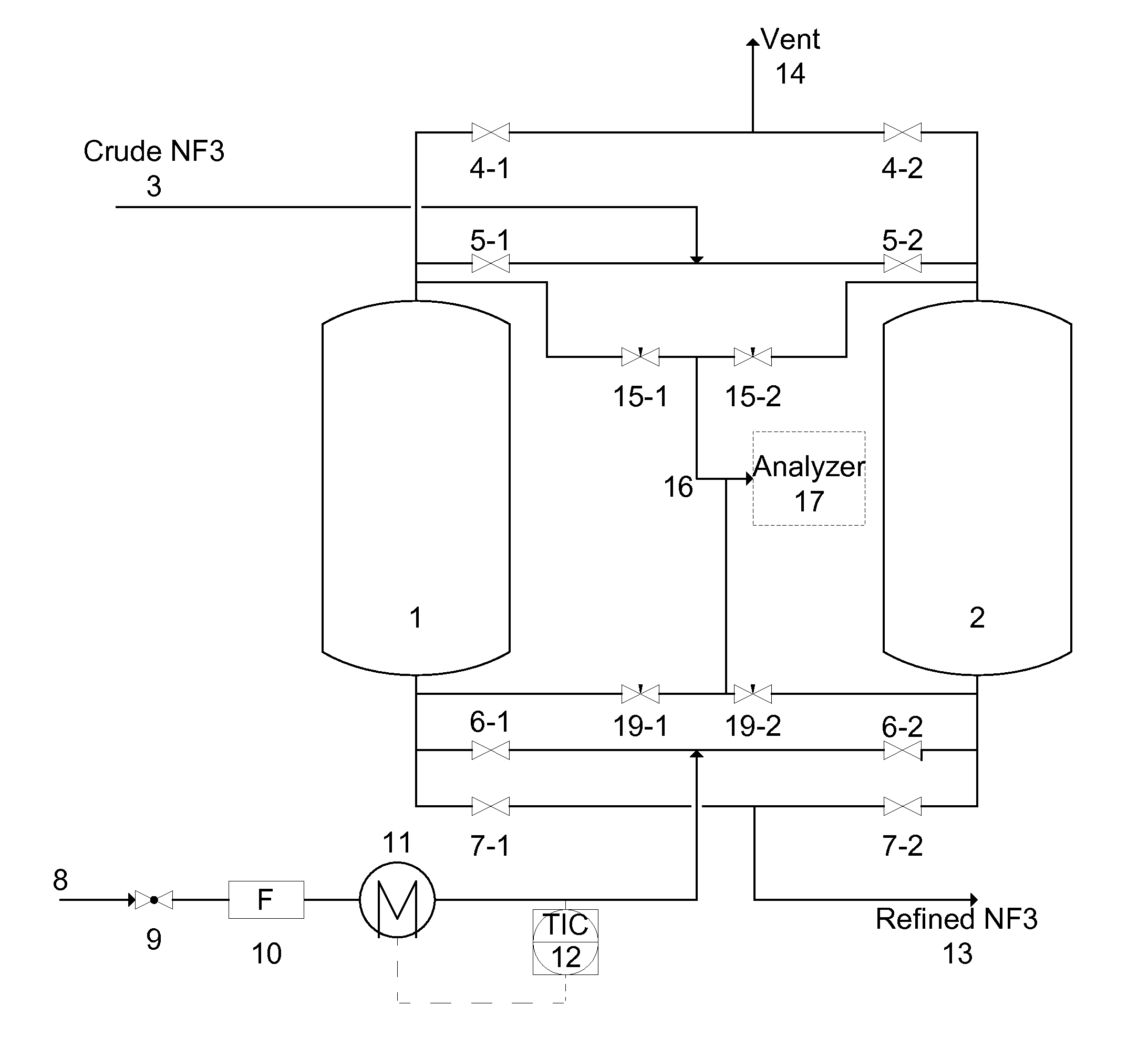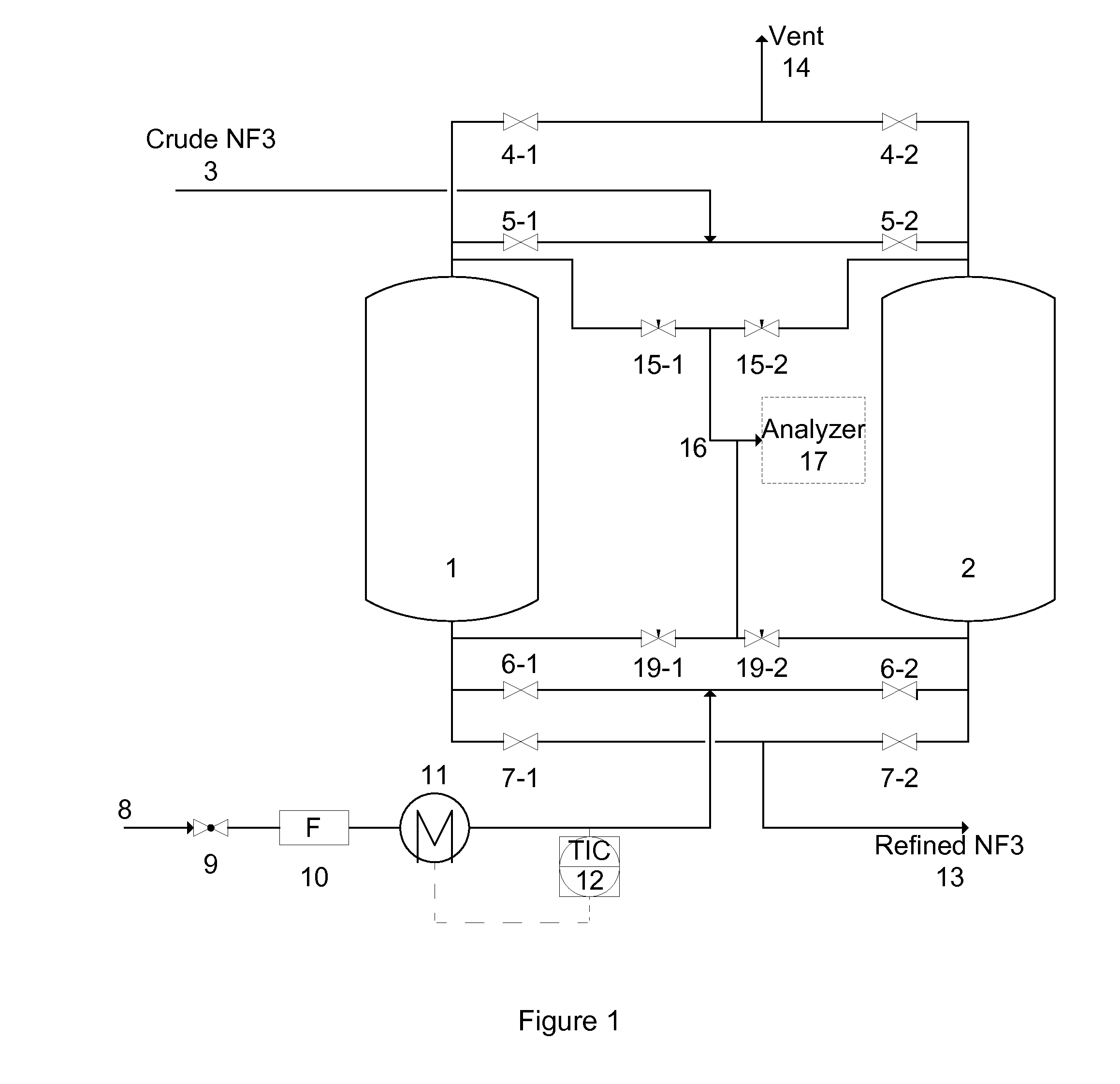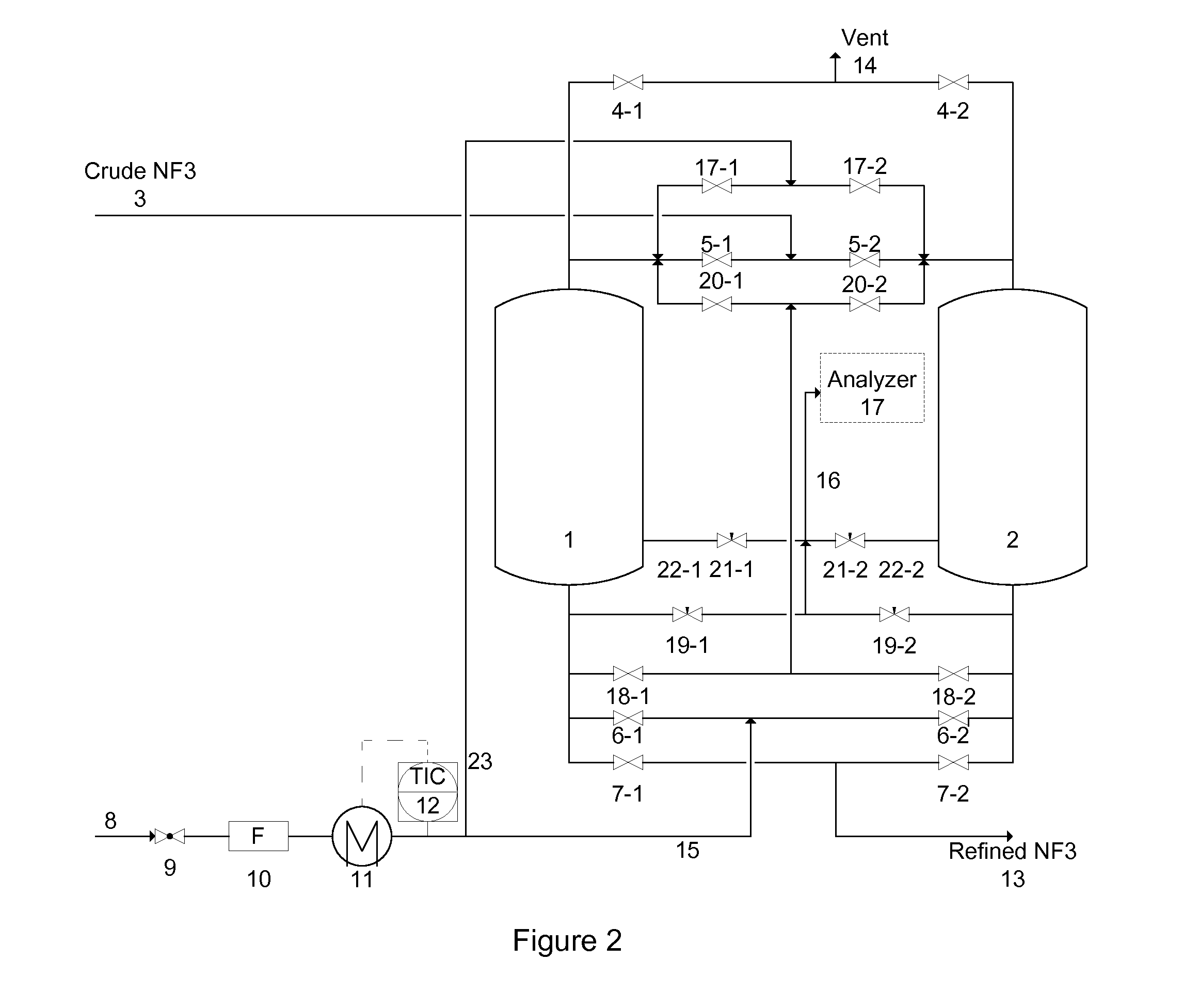Recovery of NF3 from Adsorption Operation
- Summary
- Abstract
- Description
- Claims
- Application Information
AI Technical Summary
Benefits of technology
Problems solved by technology
Method used
Image
Examples
working examples
[0088]A system described by FIG. 1 containing two vessels was used in the working examples. Two vessels were filled with Na-MOR to purify crude NF3 containing 70% NF3, 20% N2, 10% O2 and 100 ppm N2O. The impurity to be removed was N2O.
[0089]The crude NF3 gas was flowed through vessel 1 until the analyzer 17 detected 1 ppm N2O in the effluent of vessel 1. Then, the crude NF3 gas flow was switched to vessel 2 and vessel 1 went through a recovery and regeneration operations as described by the following examples.
example 1
[0090]A nitrogen purge gas was flowed counter-current through vessel 1 at a molar mass velocity of 28 kg-mol / m2 hr with a residence time of 0.17 min and 1.1 atm pressure at ambient temperature for 3.5 hours (recovery operation) and then heated to 290° C. (regeneration operation). A gas chromatograph measured the concentration of NF3 and N2O in the nitrogen effluent. The known flow rate with the measured concentrations of NF3 and N2O allowed the integrated amounts of NF3 and N2O in the nitrogen effluent to be calculated. The aggregate amounts of NF3 and N2O detected at a given time were normalized to the total amount of NF3 and N2O detected over the entire analysis period. These normalized amounts plotted versus time were shown in the annotated FIG. 3.
example 2
[0091]A nitrogen purge gas was flowed counter-current through vessel 1 at a molar mass velocity of 28 kg-mol / m2 hr with a residence time of 0.17 min and 1.1 atm pressure at 54° C. for 4.5 hours (recovery operation) and then heated to 290° C. (regeneration operation). Analytical data were acquired and plotted as in Example 1. The normalized NF3 ad N2O amounts plotted versus time were shown in the annotated FIG. 4.
PUM
| Property | Measurement | Unit |
|---|---|---|
| Temperature | aaaaa | aaaaa |
| Temperature | aaaaa | aaaaa |
| Temperature | aaaaa | aaaaa |
Abstract
Description
Claims
Application Information
 Login to View More
Login to View More - R&D
- Intellectual Property
- Life Sciences
- Materials
- Tech Scout
- Unparalleled Data Quality
- Higher Quality Content
- 60% Fewer Hallucinations
Browse by: Latest US Patents, China's latest patents, Technical Efficacy Thesaurus, Application Domain, Technology Topic, Popular Technical Reports.
© 2025 PatSnap. All rights reserved.Legal|Privacy policy|Modern Slavery Act Transparency Statement|Sitemap|About US| Contact US: help@patsnap.com



